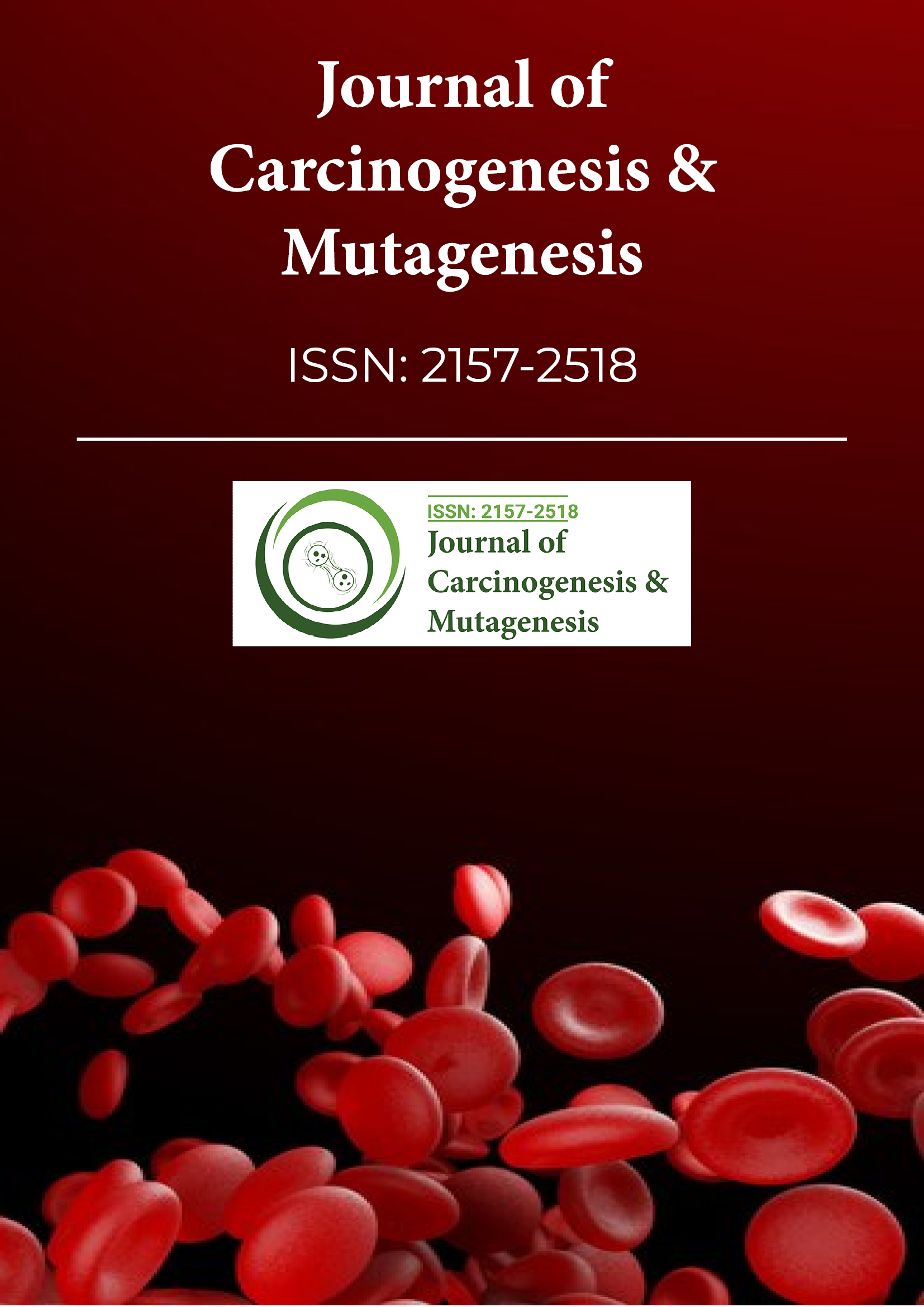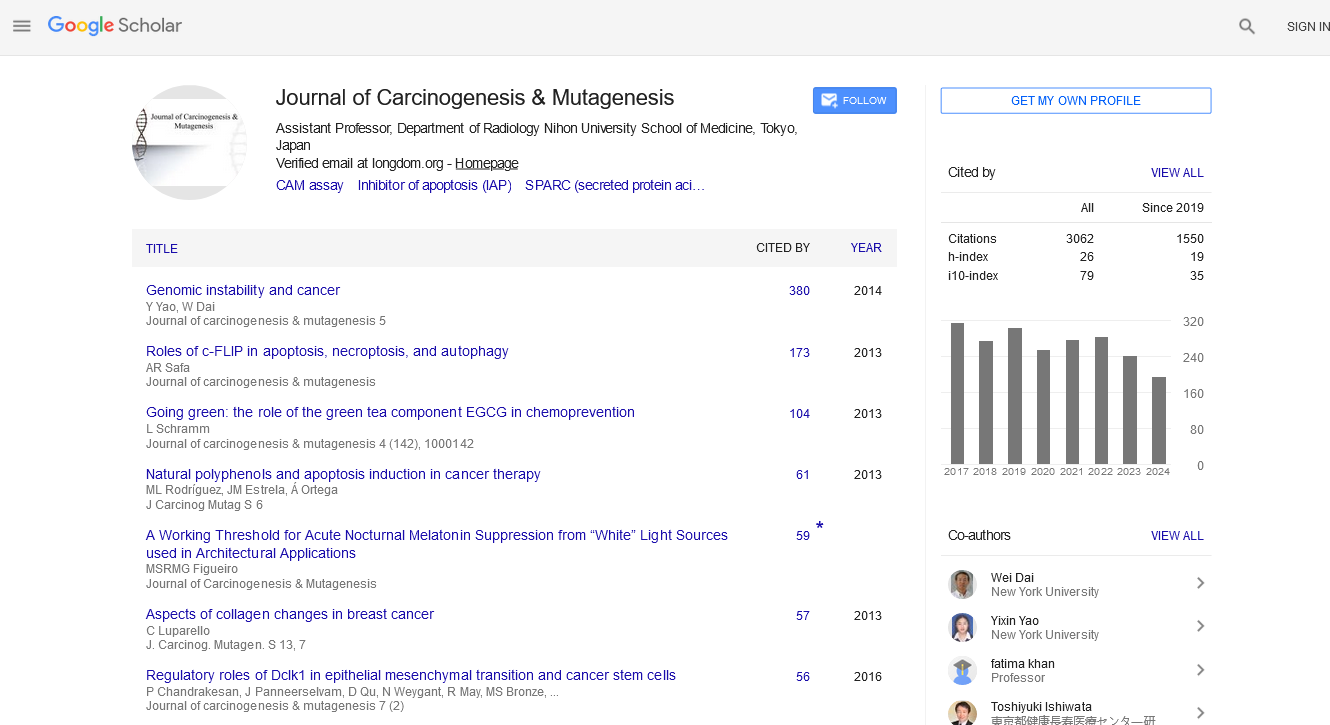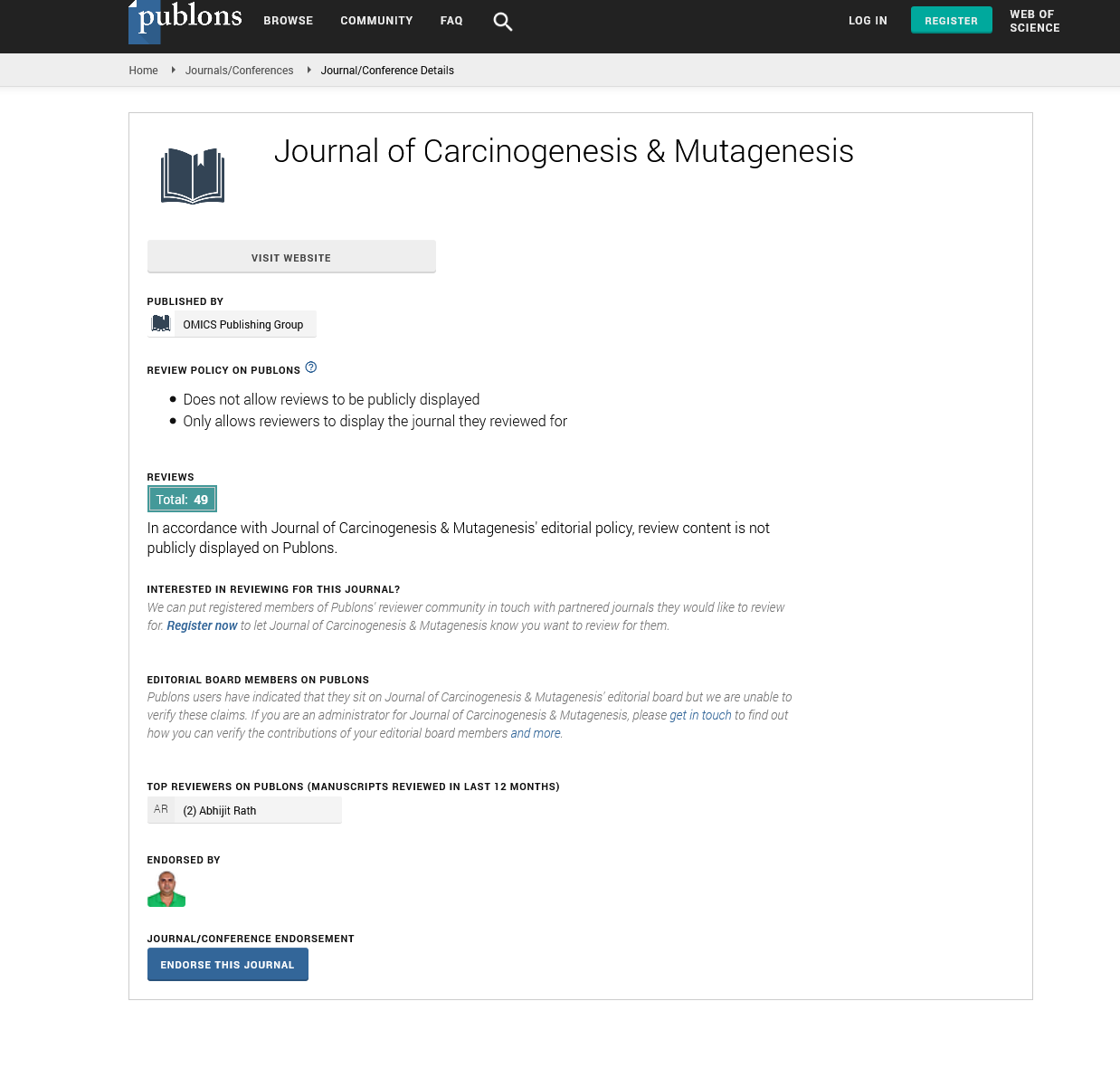Indexed In
- Open J Gate
- Genamics JournalSeek
- JournalTOCs
- Ulrich's Periodicals Directory
- RefSeek
- Hamdard University
- EBSCO A-Z
- OCLC- WorldCat
- Publons
- Geneva Foundation for Medical Education and Research
- Euro Pub
- Google Scholar
Useful Links
Share This Page
Journal Flyer

Open Access Journals
- Agri and Aquaculture
- Biochemistry
- Bioinformatics & Systems Biology
- Business & Management
- Chemistry
- Clinical Sciences
- Engineering
- Food & Nutrition
- General Science
- Genetics & Molecular Biology
- Immunology & Microbiology
- Medical Sciences
- Neuroscience & Psychology
- Nursing & Health Care
- Pharmaceutical Sciences
Abstract
Nodular fasciitis associated with atypical clinicopathological features: a review of the USP6 fusion gene partner
Kazumi Fujioka*
USP6 gene rearrangement has been identified in the most of Nodular Fasciitis (NF) cases. Though the detection of several USP6 fusion partners has been identified, most of nodular fasciitis cases have exhibited the presence of MYH9- USP6 gene fusion. Recently, a literature review of rare intradermal nodular fasciitis focusing on the genetic analysis has been provided, suggesting that the detection of USP6 gene rearrangement may be the very useful and important genetic analysis for accurate diagnosis in even intradermal nodular fasciitis. The result provided MYH9, EIF5A and TPM4 as a fusion partner with USP6 in rare intradermal nodular fasciitis. In this review, the author summarized the rare nodular fasciitis accompanied by atypical clinicopathological findings including recurrence and/or metastasis, malignant morphology, atypical mitosis and different fusion partners with USP6. The result provided that USP6 rearrangement is a potential tool for accurate diagnosis in atypical nodular fasciitis. Several fusion partners including PPP6R3, MYH9, EIF5A, CALD1, COL6A2, PAFAH1B1 and SREBF1 with USP6 have been identified by Fluorescence In Situ Hybridization (FISH) and/or Next Generation Sequencing (NGS), suggesting that these fusion genes may have different biological spectrum reflecting unusual clinicopathological features. Further study is needed to clarify the biological spectrum of USP6 fusion partner to avoid aggressive and invasive treatment for nodular fasciitis associated with atypical clinicopathological features. Meanwhile, a few cases of nodular fasciitis with atypical manifestations and typical MYH9- USP6 fusion have been revealed, therefore it is significant to identify USP6 rearrangement for diagnostic conformation of nodular fasciitis by molecular analysis.
Published Date: 2025-02-14; Received Date: 2025-01-14


